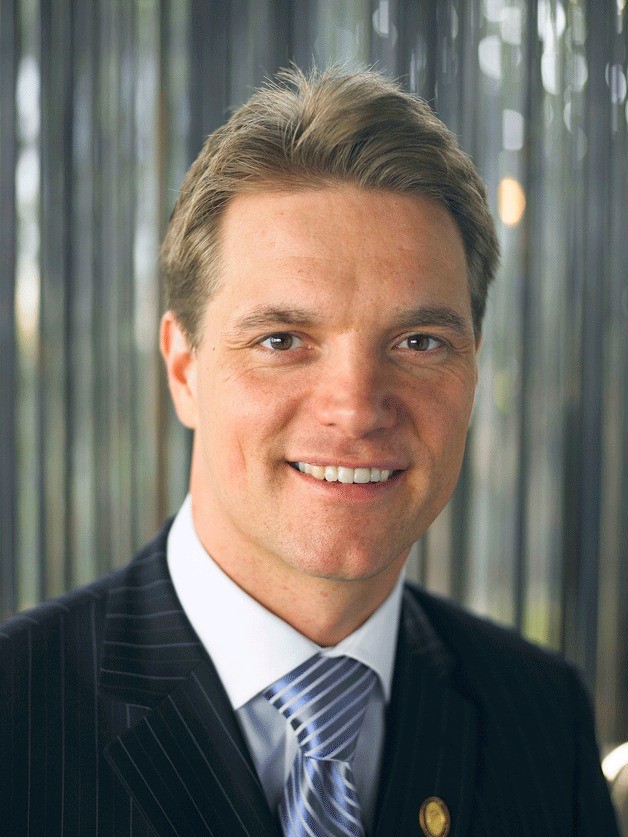Shayn Bjornholm’s first taste of wine was not like when Edmund and Lucy discover Narnia.
His curiosity did not lead him to a parallel universe of possibility and adventure, to the talking animals you might meet in a drunken stupor.
If anything, he spat that tainted juice right back out.
It was an appropriate response to a sketchy jug of Gallo Chablis unearthed by 7-year-olds from a rock wall in Lexington, Massachusetts.
So when did the examinations director for the Court of Master Sommeliers, Americas begin to love wine? He can’t remember, although he’ll never forget the seminal bottle, his first glance at what the industry could offer a zealous learner.
After graduating from the University of Virginia, Bjornholm, an architecture major, decided he wasn’t good enough to make it. Instead, he shifted his ambitions full-steam into acting and installed himself in New York City.
To pay the rent, he worked in restaurants, landing at the Stanhope Hotel, on Fifth Avenue.
Sommeliers didn’t really exist in the early 1990s, so pouring wine was left to the captain or maître d’ in Bjornholm’s restaurant.
But he got his chance to play pro one evening when a fire erupted in the kitchen and a woman had a heart attack in the lobby. A patron had ordered a $1,500 bottle — a 1970 Château Lafite-Rothschild — and all eyes were on him.
“I literally got a 30-second tutorial on why you decant, how you decant, what Lafite is, and they just said go,” he remembered.
“I got enough information to realize this was the most important wine in the world at the time and I knew nothing about it. It completely excited and intimidated me.”
In spite of Bjornholm’s ignorance — or because of it — the patron was kind.
“He said, ‘Just pour slow so there’s no sediment, that’s all I ask,” the master sommelier recalled.
Then he offered a sip to Bjornholm and shared the wine’s history.
“I thought, ‘Wow, these people that like wine, they must be pretty gracious, sophisticated folk,’” Bjornholm said.
It was a weird prophecy.
Even then, he didn’t know what was coming. He just knew wine was exciting and that knowledge about wine could pay off, with bigger tips and bigger checks to fund life and rent and acting.
Bjornholm’s transition from wine lover to certified wine expert began six years later. He was married, nearing 30, and worried about his prospects as an actor as he contemplated starting a family.
He tried to get into the University of Washington’s graduate program for landscape architecture, but was roundly denied, which felt like a sign. Around the same time, Bjornholm read a USA Today cover story about master sommelier Andrea Robinson née Immer.
The light bulb went off.
“All of a sudden it became crystal clear to me that she was one of this sort of army of people who could actually make wine an academic and career pursuit,” he said.
Bjornholm, who was already working 60 hours a week as a restaurant manager, signed up for a six-month course with the International Sommelier Guild in Vancouver.
“I was just so inspired by this, I had no issues driving up there three hours, taking this eight-hour class, then driving back,” he said.
In 2000, six months after earning his diploma, he got hired as the wine director of Canlis and began working through the Court of Master Sommeliers’ four levels. Bjornholm passed the most important test, the one only 230 people have passed, ever, in 2005, on his first try.
But anybody can do it, he says.
“It’s more a system than it is a gift. I’d say 85 percent of people could pass advanced if they focused on it.”
Sommeliers aren’t super sensors, tasting butter/leather/cannons like someone yelled “Fire in the hole!” right before the sip happened. That mastery takes endless practice and exposure to a tasting vocabulary. (Although Bjornholm has an inherent knack for spotting Riesling, thanks to a childhood habit of pilfering petrol-scented scratch and sniff stickers from his babysitter, Mrs. Bailey. “Those who make German Riesling hate that people say it because it has so many negative connotations, but it definitely smells like gasoline,” he said.)
After Bjornholm passed the Master Sommelier exam, he stuck around Canlis for another year and then moved on to the Washington State Wine Commission, where he served as the education director from 2006 to 2011.
“I couldn’t say it, but Bainbridge Vineyards was definitely one of my favorite Puget Sound wineries at the time because they use local grapes, which is a big challenge,” the island resident explained.
These days, Bjornholm rarely makes it to wineries, though; he’s too busy.
When he’s not working from his office on New Sweden Road, he’s traveling to far-off cities like Seoul and Budapest or, within the states, to places like Aspen, Palm Beach and New York City. It’s not too shabby.
But as much globe-trotting as he does, Bjornholm’s acquired-hometown pride doesn’t stray.
“I think people should know that Seattle has one of the greatest sommelier scenes on the planet,” he said. “And not just per capita because it’s a small city. We’re so super proud because we’re not just world class but we have a pay-it-forward humility, which we continually invest to make the hospitality industry better because it’s all about creating great experiences for guests.”



